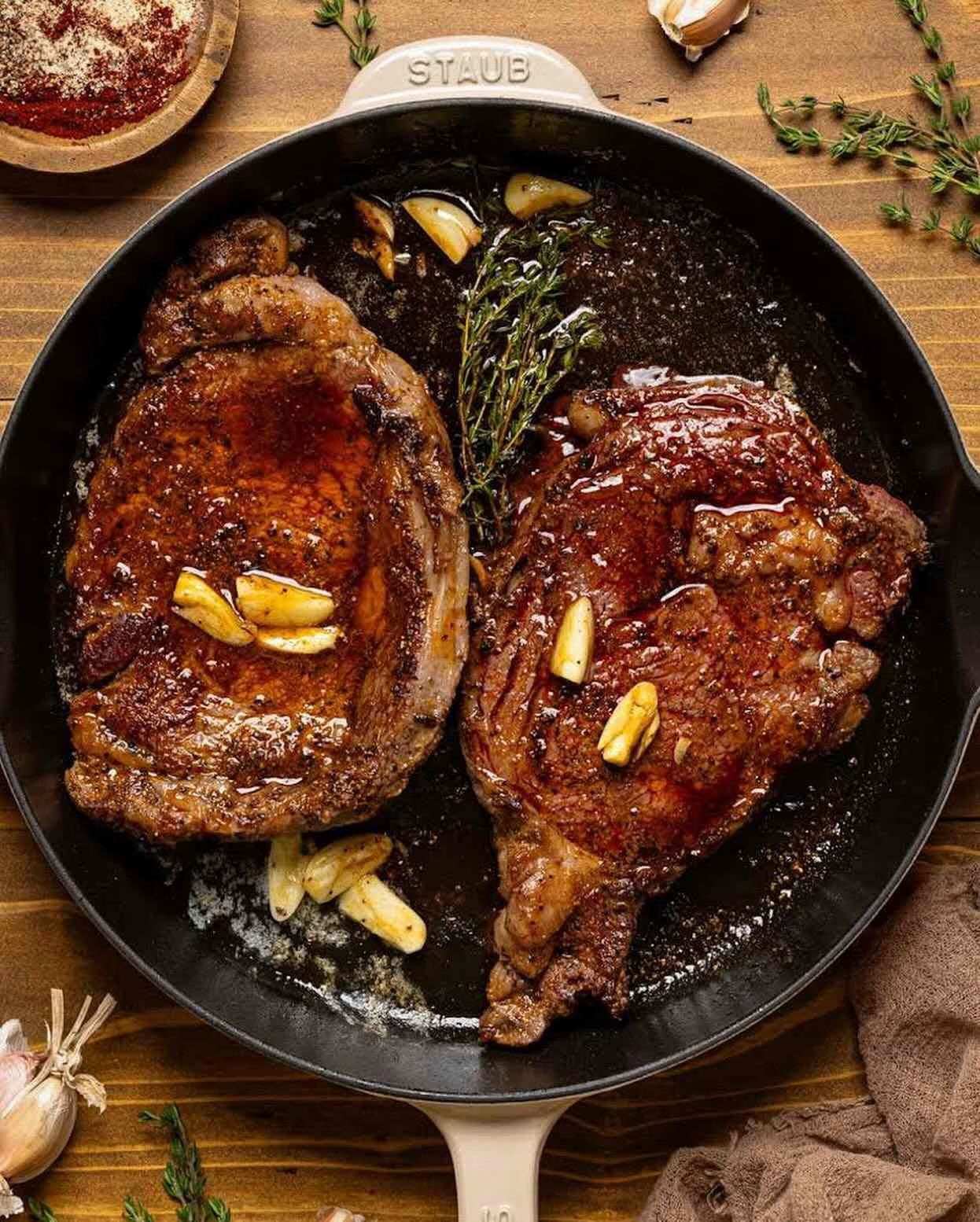I always start by patting the steak dry with paper towels—this helps the crust form better. Once it's dry, I season it generously with coarse sea salt and freshly ground black pepper on both sides. Don’t season too early or the salt will draw out moisture.
Get your cast-iron skillet smoking hot over medium-high heat. I add just enough vegetable oil to coat the bottom. Let the oil heat until it shimmers—this is your cue that the pan is ready for the steak.
Place the steak gently in the hot pan and listen to that perfect sizzle. Cook it without touching for about 3–4 minutes on the first side. Then flip and repeat for the other side. Don’t forget to sear the edges by holding the steak with tongs for about a minute.
Now reduce the heat a little and add your butter, garlic, and rosemary sprigs to the skillet. Tilt the pan and use a spoon to baste the steak continuously with the melted butter for 1–2 minutes. This step is key for building that rich, herby flavor.
Transfer the steak to a cutting board and loosely cover it with foil. Let it rest for at least 10 minutes before slicing. This helps the juices redistribute so each bite is incredibly tender and flavorful.
